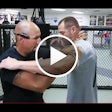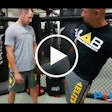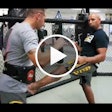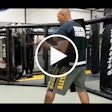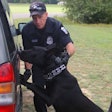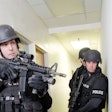One of the more difficult skills for the recruit to grasp is critical tactical thinking. This is a much sought after skill and it is sometimes difficult to cultivate. As a recruit you will have many doubts and fears during your response to calls or danger. The academy can only teach so much; you must develop your senses. But how?
If you recall your emergency vehicle operations course (EVOC), you have the concept. Now just adjust it to tactical response. In driving an emergency vehicle, you were taught to verbalize to your instructor upcoming road hazards or conditions. On the left are two kids playing in a yard; they could do this or that. Coming upon a four-way intersection, I do not have the light and so forth.
Recall this drill? You still should be doing this while driving to make yourself a safe emergency vehicle operator.
Quick review: Concealment is something that hides your presence and cover is something that hides and protects you from incoming weapon or projectile fire. One performance exercise that you will be graded on daily is your tactical thinking and response to dangers (every department has different verbiage). How did you approach a business during an alarm? How did you stand by a door or window? Did you walk down the sidewalk or take a more advantageous route?
Recall these?
You should be thinking to yourself as you approach any call for perceived dangers. For example, when I park the patrol car I should not park directly in front of the building. I exit and approach to the side of the business where there is a wooden fence (concealment) and then move behind a dumpster (cover). You should take critical microseconds to gain a tactical advantage that places you in an advantageous position to observe and respond.
Taking it to a higher playing field, plan out the escape routes as well. If I am standing here and I take on fire, I can drop off the porch for immediate cover. Run to the big tree or behind this car to gain immediate cover. Then regroup to seek other tactics as this event unfolds. Yes, I said escape routes, for you do not want to paint yourself into a corner you can't get out of. I have always said that a good run to regroup is better than a bad stand. Don't believe me? Research Custer.
What I want to offer up here is a refresher on verbalization of perceived dangers. No, you as a recruit will not know them all and you will be directed by your FTO on more perils to look for. What is important here is to enhance your 'but what, if then' thinking. There is neither a presentation nor book that is going to instill tactical thinking into your head.
You must think and live tactics to survive out there in the streets. Stop, analyze, and use all of your senses to make the proper decisions. There is nothing better than a big stinky dumpster to get behind for cover when that need arises. There is no worse feeling in the world than to look around and feel you are about to do a sprint to safety wondering where is a big tree when you need it. Learning and living tactics is a part of the job. It takes time and lots of practice.
Learn proper tactics, live tactically, and pass it on.







